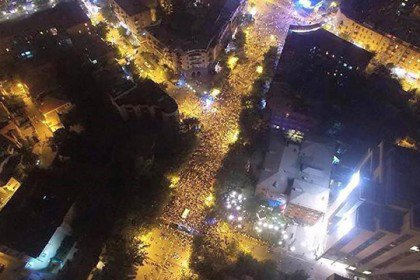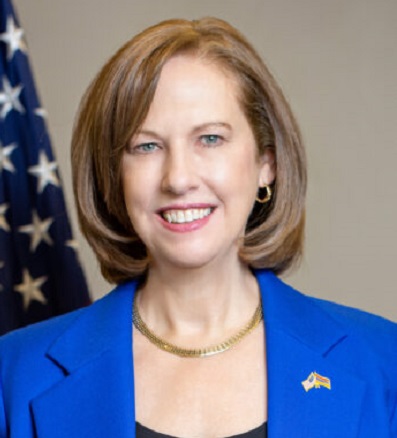By Zhanna Andreasyan and Georgi Derluguian
 washingtonpost.com: Armenia, a small traditionally pro-Russian former Soviet republic, has just experienced a spectacular eruption of mass protests. On the surface, it was against a fairly minor increase in electricity rates. In Moscow, however, conservative journalists sounded alarms, alleging that America was attempting another “regime change” in Russia’s underbelly.
washingtonpost.com: Armenia, a small traditionally pro-Russian former Soviet republic, has just experienced a spectacular eruption of mass protests. On the surface, it was against a fairly minor increase in electricity rates. In Moscow, however, conservative journalists sounded alarms, alleging that America was attempting another “regime change” in Russia’s underbelly.
Sociology might offer a less conspiratorial explanation. Big protest movements often appear to be so sudden and spontaneous because they build upon citizens’ prior “micro-mobilizations” around local issues, which took place below the mainstream media’s radar screen. The events in Armenia followed this dynamic.
On June 17, the Armenian government approved a 16.9 percent increase in electricity prices. The next day, a few hundred young people staged a sit-in near Yerevan’s opera house, the traditional site of popular protests since the days of perestroika in the late 1980s. It was widely rumored that the price increase was only to cover up waste and corruption. Their slogan was as emotional as it was vague: No to Robbery!
The original protest seemed easily ignored, so in the evening of June 22, the protesters occupied Marshal Baghramyan Avenue, Yerevan’s main thoroughfare, where both the parliament and presidential palace are located. Monumental traffic jams ensured that Yerevan’s citizens felt this immediately. Curiously, a majority of Yerevantsis did not seem to mind the inconvenience.
Early on June 23, the Armenian police — claiming that they were clearing the obstacles to city traffic — dispersed the demonstrators with water cannons and briefly detained 237 of them.
At this news, Yerevan seemed to explode. Much as had happened in Kiev’s Euromaidan in November 2013, police action provoked a blowback. Now thousands flocked into Baghramyan, including the local media and sports celebrities merrily posing for pictures and taking selfies. Only a couple months earlier, and virtually on the same spot, the Armenian American pop personality Kim Kardashian had been picturing herself during her tour of the ancestral homeland to commemorate the victims of the 1915 Turkish genocide.
The Armenian history of victimhood matters in the classical sense of Durkheimian theory: External conflict fosters cohesion within social groups. Extraordinary conflict, like the memories of genocidal extermination, fostersextraordinary cohesion. This helps explain why, after the first clash had backfired so badly, Armenian authorities carefully avoided using force against fellow Armenians. The protest movement thus obtained its window of political opportunity.
In the following weeks, the protesters stayed behind the barricades of chained trashcans while the police patiently stood in phalanx behind their shields a few paces away. To relieve the psychological tension and plain boredom of protracted face-off, the crowd kept on dancing, waving Armenian flags, making impromptu speeches almost round the clock. All this was broadcast live by Web-based TV channels. For the duration, the safety and fun reigning on Baghramyan Avenue seemed to make it less a protest rally than a popular destination for Yerevantsis’ evening promenades.
Here the trajectory of Armenian protest diverged from the Ukrainian revolution earlier last year. The small group that tried to unfurl European Union flags, as had happened in the Ukrainian Euromaidan a year earlier, was heckled and expelled from the crowd. While the government sought to avoid violence, the protesters insisted that they had no political agenda. The authorities on their side recognized the protest as peaceful and purely social.
Seeking to defuse the situation, President Serge Sarkisian invited representatives from the crowd to come into his palace for a discussion. The protesters proudly claimed to have neither leaders nor negotiators. Instead, they claimed to represent the Armenian people as a whole with a single demand: Rescind the price hike!
Until this protest, the “leaderless” network tactic had worked well for Armenian protesters in a variety of recent campaigns that had focused on local social issues: protection of endangered forests and urban public spaces, or demands to roll back draconian parking fines, increased minibus fares or the privatization of pensions.
Having developed outside regular electoral politics, these micro-mobilizations had been building their own mobilization resources. The participants in protest events, mostly young and educated men and women, formed networks of mutual support and information-sharing, which was helped by newly spread access to the Internet. Furthermore, activists had learned new tactics that were simultaneously nonviolent and socially approved. Avoidance of alcohol was recognized as a must. Spirits were maintained at the rallies with folk songs, dances and games.
Most importantly, shaming authorities in such boisterous yet seemingly innocuous ways began producing small victories that surprised and encouraged the mass of ordinary citizens. Perhaps most significantly, in August 2013 a diffuse network of Internet-connected activists had managed to prevent a big increase in minibus fares, the main means of public transportation in Yerevan, which would have hurt the majority of its residents. A week of dancing and yelling in protests at the bus stops became highly visible and elicited still more citizen solidarity. For instance, it became common practice for private motorists to offer shared rides to the people refusing to pay the new higher fares on minibuses.
The authorities found it very difficult to deal with such campaigns outside the familiar, largely corrupt and managed landscape of post-communist democracies. Their diffuse nature and high emotional charge put the protest networks beyond the commonly practiced manipulations.
Successful popular mobilizations tend to open space for other issues. The festive and safe atmosphere helped to foster inordinate gender equality in the Armenian rallies. Armenia remains fairly patriarchal and socially conservative. But the widely supported protest gave young educated women a great opportunity to claim public prominence, which translated into the slogans more reminiscent of Western 1968: No to robbery, yes to short hairs!Or even yes to [woman’s] choice! The officials sought to stigmatize the protesting young females, citing traditional standards of modesty. Once again, official attacks provoked further radicalization, and the young men at Baghramyan Avenue began chanting that the real girls worth marrying were those protesting and staying for nights in the barricades.
The very success of a leaderless movement, however, at a certain point threatened to become its own undoing. Who or what would institutionalize the protest’s achievements? More simply, who would declare victory and end the rally? And so the protest dragged on and on, gradually losing its emotional energy.
The big complicating problem is that the electrical grid in Armenia belongs to the Russian company, RAO United Energy Systems. In recent years, Russian corporations came to own whole sectors of Armenia’s economy in the swaps of debts for assets. Armenian authorities’ hands were tied.
Yet Armenia remains important to Russia as bridgehead in the Southern Caucasus and a member of the Russia-led Eurasian Economic Union. And so intense negotiations ensued between Moscow and Yerevan.
On June 27, Sarkisian announced a face-saving compromise: the Armenian state budget would absorb the price increase while an independent commission involving representatives from the protesters could audit the economic reasoning behind the new energy tariffs.
The protesters, already strained by the long rally, split into the two factions familiar in many social movements. In the German Green Party, these are called the “Fundies” and the “Realos.” The “realos,” a minority of protesters, accepted the presidential invitation to participate in the public audit and moved away from Baghramyan Avenue. The Armenian police chief promised to join the celebration dance as soon as normal traffic resumed in downtown Yerevan. Most, the “fundies,” decided to stay behind the barricades and press their demands to the end.
The denouement took another week. Police regularly issued warnings that they could no longer tolerate the disruption to traffic but did not move. They calculated that the movement would exhaust itself — which proved correct. Dancing notwithstanding, it is not possible to maintain emotional energy during protracted rallies with uncertain goals. In the end, police almost tenderly (of course, before the national TV cameras) removed the last protesters and easily dismantled their barricades.
It often happens in contentious politics that both sides win something and lose something. It may take a while before the score becomes really known.
The Armenian government’s incumbents won, at least in the short run. They survived the challenge and showed their backers in Moscow that they could stay in charge without any violence.
The protesters, despite their short-lived glory followed by the split, might have won in the longer run. It remains to be seen what political forms this movement might assume. Much will depend on further learning among the young Armenian activists. This is not going to be easy. The movement grew to a scale at which it will have to figure out its own politics.
However, it is now quite certain that a new political generation has come of age. That movement makes the next elections in Armenia seem less predictable than only a month ago.
Zhanna Andreasyan, Ph.D., is lecturer in sociology at Yerevan State University. Georgi Derluguian is a professor of sociology at New York University Abu Dhabi.










